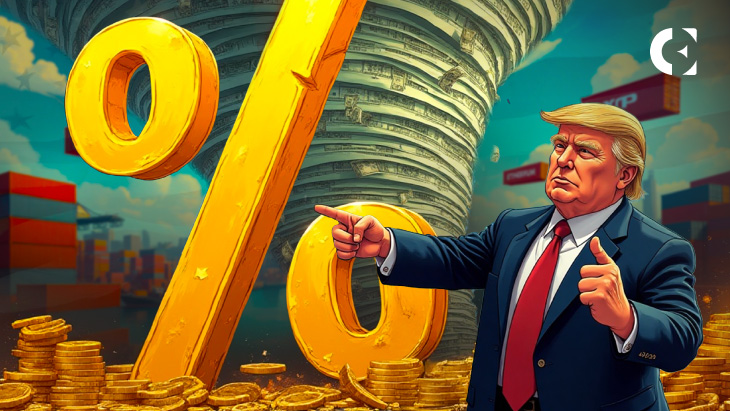- The EU has temporarily halted the imposition of tariffs on €21 billion worth of US imports
- US President Donald Trump has threatened to raise tariffs on EU imports from the initial 25% to a drastic 50%, with talks ongoing until a July deadline
- The EU is now considering a UK‑style trade agreement with the US, which would include reciprocal 10% tariffs on goods, with plans to later negotiate and reduce tariffs on sensitive items like steel and cars
The EU has paused clawing back on €21 billion of US imports such as steel, aluminum, cars, motorcycles, and poultry, to allow time for negotiations. However, this suspension expires on July 14, which is less than a month from today, so the EU is now in a dilemma between retaliation or recession risk.
Originally, US President Donald Trump threatened to raise tariffs on EU imports from the initial 25% to a drastic 50%, with talks ongoing until a July deadline. Due to this, Brussels has prepared its response, an extensive €21 billion list of counter-tariffs that could potentially expand to €95 billion in wider goods if no agreement is reached by mid-July.
Currently, there’s a predicament in the EU with some like Bernd Lange (a member of the European Parliament from Germany) stating that if US tariffs go into effect, the bloc is prepared to retaliate immediately from July 14.
On the other hand, some analysts warn that 50% tariffs could heavily disrupt industries such as automobiles, steel, and pharmaceuticals. They also warn that this may drag the eurozone into recession and prompt the ECB (European Central Bank) to cut rates further.
There is a disparity between the country members as well. For instance, France is leaning toward retaliation, while Italy and Hungary favor continued dialogue.
A UK-style deal
The EU is now considering a UK‑style trade agreement with the US, instead of a full tariff rollback by the July 14 deadline. This would include reciprocal 10% tariffs on goods, with plans to later negotiate and reduce tariffs on sensitive items like steel and cars.
It seems that at the moment, the consensus is drifting toward a gradual approach, starting with modest reciprocal tariffs before delving into sector-specific reductions.
It’s reported that the EU Trade Commissioner Maroš Šefčovič is overseeing sectoral tariff discussions with US Commerce Secretary Howard Lutnick. Other EU officials are engaging with the US Trade Representative’s office on other matters.
With July 14 approaching, a deal could de-escalate one of the few remaining major geo-economic flashpoints. However, failure may flip sentiment toward recession risk, prompting central banks to act sooner or more aggressively.
Disclaimer: The information presented in this article is for informational and educational purposes only. The article does not constitute financial advice or advice of any kind. Coin Edition is not responsible for any losses incurred as a result of the utilization of content, products, or services mentioned. Readers are advised to exercise caution before taking any action related to the company.









